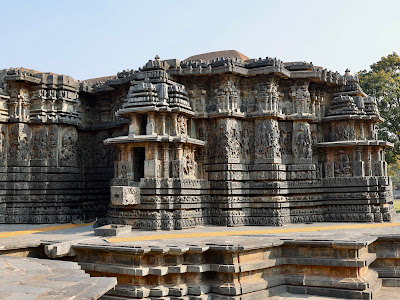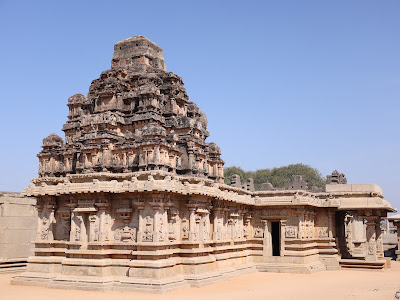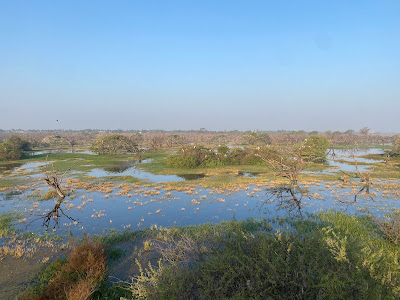The history of Mysore begins in the 14th century CE, when it was established by King Hoysala, and the city became an important commercial and cultural centre. However, it was in the 16th century that Mysore gained prominence under the rule of the Wodeyar dynasty. This period was fundamental for the development of architecture and the arts, seeing the construction of magnificent palaces, temples, and gardens.
In the 18th century, the city was invaded by British forces, which led to a series of wars and conflicts. Despite finally being defeated in the fourth war, and under British rule, the Wodeyars maintained Mysore as a British protectorate, with some autonomy in internal affairs of the kingdom. Finally, around 1956, it was integrated into the state of Karnataka.
The palaces of Mysore are one of its great attractions; constructions of impressive sizes, with massive ceramic components from the south, halls with columns and arches, stone carvings, and outstanding woodwork. Its galleries, full of murals, tell the stories of the place and are testimony to the ways of life of the time, both in everyday life and in defence and war efforts.
Mysore also invites you to explore its most artisanal manifestations; four practices are accessible: incense, essential oils, bamboo basketry, and the famous Mysore silk.
Incense and oils are associated with cultivation of sandalwood, and are the most famous and important of the products marketed. However, with the development of the practice, various trees and shrubs provide the world with the beauty of their essences. We enjoyed a session of aromas and laughter, between the oils and the good humour of the owner of the place. With what's left of the sandalwood after the carving of figures and beads for mala and bracelets, the incense is prepared. On our visit to a temple, we watched a woman creating a thick and beautiful incense stick that she uses to avoid flies; this is the matrix mass that allows the sandalwood powder to agglomerate. We had the opportunity to learn from an expert woman, and as always, mastery makes the task seemingly simple. The mixture of movements that must be made with each hand was a surprise: while the right moves from front to back rolling the mixture, the left produces a rotation of the axis of the bamboo stick at a different speed, which results in a surprising brain short circuit. Fascinating.
On the outskirts of Mysore, we were able to visit Ram, an expert craftsman in bamboo basketry. When we finally managed to explain our intentions with the visit, he began his explanation with the selection of the material to make a basket. Since we do not share the same language, Google Translate was indispensable and Ram enjoyed being able to speak and that Marce could understand him. Ram has been crafting since he was seven years old and learned from his mother; he is very proud to have raised and educated his son in his trade as a basket-weaver, despite not having a formal education.
In the basket he uses three thicknesses of fibre: one wider and flatter to create the matrix, one five millimetres wide for interweaving, and one thinner and narrower, of three millimetres, to make the braid of the edge. After the first laps, Marce asked him to let her do it and that generated a beautiful conversation of hands and intentions between them. In the next step, he took control and modelled for her, and then she followed in his footsteps. Control flowed from one hand to another without resistance, without permission, without fear, in the certainty of a shared intention. About us, several local people approached to observe and offer explanations, and Ram attended them generously, creating spaces for this delicious game, while the driver of the tuk-tuk made videos and helped with the translation when the place was too noisy to hear the digital voice of the phone. In the end, a beautiful basket was in Ram's hands and now it is in our home, offered to us as a gift from him.
The other exploration was Mysore silk, distinguished by its lightness - it is crepe silk, and a saree weighs 120 grams - as well as by its beautiful embroidery with gold threads. It was surprising to find a giant car museum that has been curated not only to present popular old vehicles, but to allow us to approach the relationship of the territory with different classes of transport and forms of use. Additionally, it has a section of artefacts that represent the traditions of the population through time.
Bengaluru was our last destination in this section of the trip. The train journey from Mysore provided us with a lot of information and awareness of the challenges of life in the information technology capital of India. Bengaluru is one of the cities with the fastest growth in recent years and has a clearly established agenda to position itself as a cosmopolitan destination for the world. Although it is known for its heavy traffic, it turned out to be a city that allowed us to walk; we found pavements, parks, and destinations to explore on our own. The botanical garden has a huge collection of trees and gardens, which is a pleasure for curiosity.
Several art galleries allowed us to delight in the creations on display, and the documentary centre gave us the opportunity to discover Nicholas Roerich, a prominent Russian painter, writer, and philosopher of the 19th century, known for his deep connection with spirituality and his love for nature. His work covers a wide range of themes, from majestic landscapes of the Himalayan mountains to representations of mythology and traditions of various cultures. Roerich was a fervent defender of peace and culture, promoting the idea that art can be a vehicle for union between peoples. In addition, we connected with the valuable practice of local libraries, which opened for us another dimension of reality.
This was the last station of this segment of the trip in India, our visa was ending and it was necessary to leave to apply for the next one and return later in the year. However, leaving India was not easy. The cancellation of flights, extreme security inspections, the confiscation of our GPS, hours separated by administrative and security procedures, missing flights, and a stay in a hotel of limited reputation add to the memories of a time in India full of wonders, reflection, self-awareness, and gratitude for the generosity we find in the smile of each person, in the richness of culture, in the complexity of history, and in the paradoxes of life which, although challenging, provide fresh air to oxygenate us and provide favourable winds for continuing our journey.
Alan y Marce























































